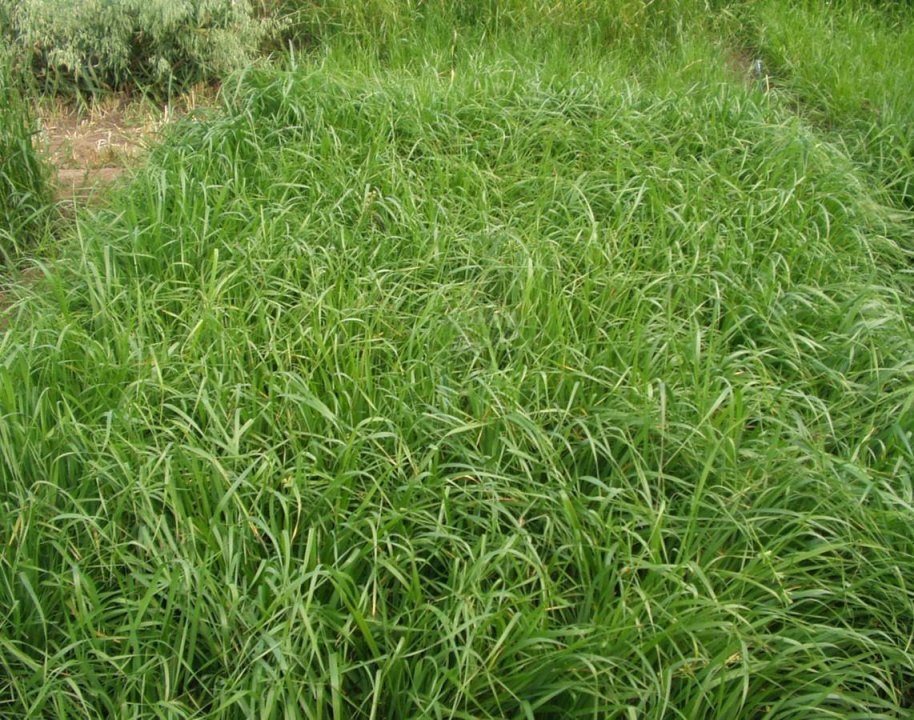
By Bruce Anderson, UNL Forage Specialist
What do you think of with the phrase “forage rye”? What about ryegrass? These words can describe half a dozen forage grasses that are very different from one another. Planting the wrong one can be an expensive mistake.
The words rye and ryegrass cause much confusion. Rye (Secale cereale) typically refers to the cereal or small grain plant. It produces a grain with strong flavors and colors. Flour made from it is used to make rye breads.
Recently, rye has become popular as a forage crop. It grows well in poorer soils and harsher climates than most other cereals. It survives tough Nebraska winters or late plantings better than other small grains like wheat and triticale. Rye can produce high forage yields but is more coarsely stemmed and less palatable than some other forages. Like wheat, rye varieties can be either winter ryes or spring ryes. When planted during spring, the spring types grow tall and will form seed if allowed to grow towards maturity but winter types stay short with only leaves. Spring types also grow tall when planted in late summer or fall but they freeze and die over winter. Winter varieties stay leafy during fall, but survive winter. Often they are among the earliest grasses to green up in spring, making them popular for early grazing before brome or native pastures are ready to graze.
Ryegrass sounds similar to rye by name but it is a very different grass. Ryegrasses are very palatable, high quality forage grasses. There are several types of ryegrass with varietal differences within each type.
The biggest name confusion occurs between annual ryegrass and Italian ryegrass. Botanically, they refer to the same plants (Lolium multiflorum) but in the forage world they have acquired different meanings. These ryegrasses are not true annuals. Under mild winter conditions, especially with sufficient snow cover, annual or Italian ryegrass can survive like a perennial.
The term ‘annual’ ryegrass usually refers to cultivars that are used for turf or for cultivars used in the Gulf states that are planted in the fall and grazed during winter and spring before dying during summer. In Nebraska, spring plantings grow rapidly and can produce seed heads with each growth cycle. Growth rate slows during the heat of summer and they usually die over winter. The term “Westerwold’ sometimes is used to refer to annual ryegrasses, especially those selected for early maturity and rapid establishment. Originally the term referred just to cultivars that came from the Westerwolde area of the Netherlands.
‘Italian’ ryegrass tends to refer to cultivars that grow more like a biennial. They produce mostly high quality leaves while growing vigorously throughout summer and fall if moisture is available. They frequently survive mild winters and produce seed heads the following spring. These cultivars have become increasingly popular for thickening winter-injured forage stands, as a companion crop for seedings of new perennial forages, and as a temporary high quality forage. We often use Italian ryegrass in mixtures with oats to take advantage of abundant early growth of oats followed by the continued high quality growth of Italian ryegrass the remainder of the summer and fall.
Perennial ryegrass (Lolium perenne) produces very high quality pasture. It is more persistent than annual (Italian) ryegrass but requires relatively consistent moisture and moderate temperatures to survive. In Nebraska it usually is irrigated and even then only lasts a few years. Perennial ryegrass cultivars may be described as being diploid (two sets of chromosomes) or tetraploid (four sets of chromosomes). Diploid cultivars usually form denser stands and tend to be longer lived but go dormant readily during summer. Tetraploid cultivars usually germinate and establish faster, have wider leaves and higher yield.
The different types of ryegrass readily cross with one another. The result of a cross between perennial and annual ryegrass is called by various names including intermediate, short rotation, and hybrid ryegrass (Lolium x boucheanum). Characteristics vary widely but usually are intermediate to the parents.
When purchasing seed for a new planting, be sure to understand these terms so you can select the best choice for your plan of use.